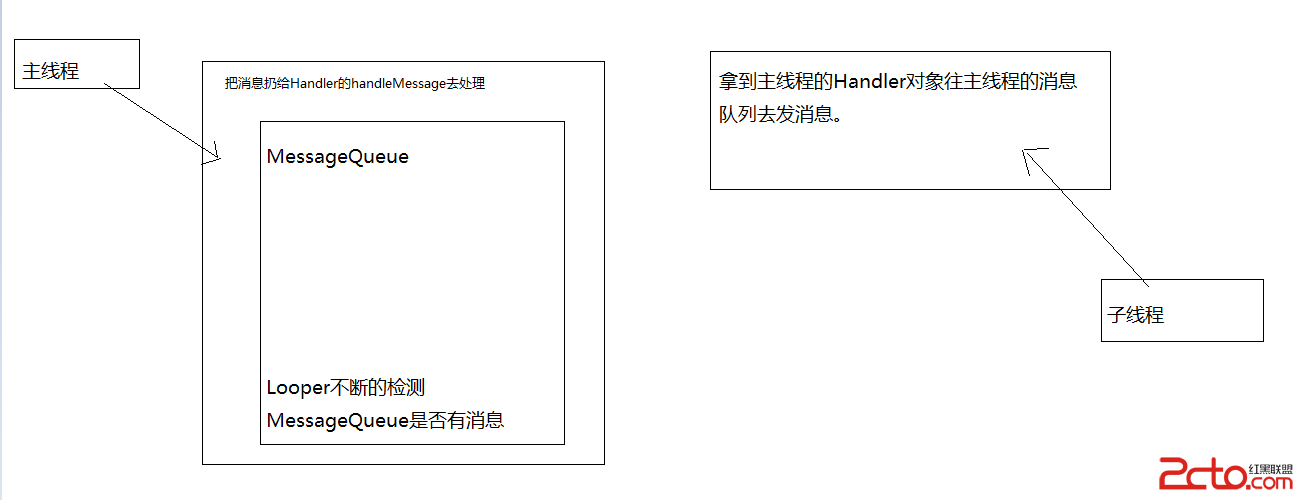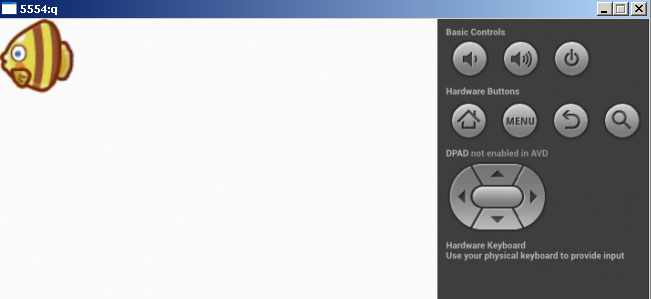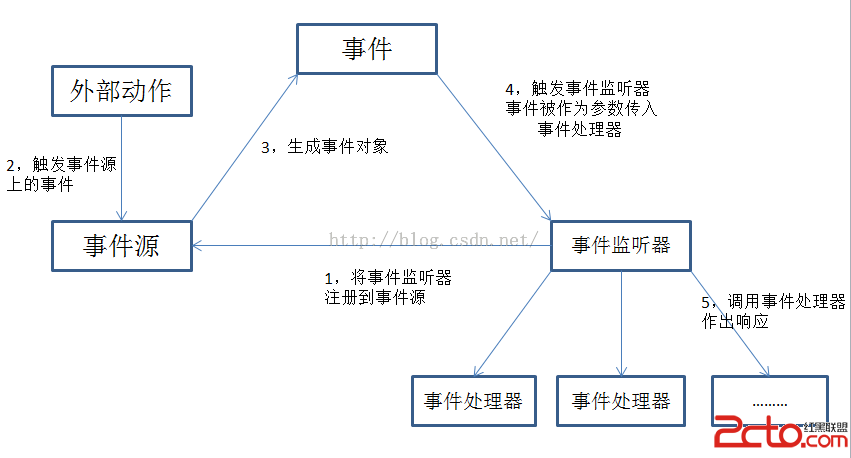android Gui系統之WMS(2)----窗口的添加,androidwms
Android系統很多,但是最常用的就兩類,一類是有系統進場管理的,系統窗口。還有一類就是由應用程序產生的,應用窗口。
1.系統窗口的添加流程
1.1 addStatusBarWindow
PhoneStatus.java中
private void addStatusBarWindow() {
makeStatusBarView();
mStatusBarWindowManager = new StatusBarWindowManager(mContext);
mStatusBarWindowManager.add(mStatusBarWindow, getStatusBarHeight());
}
getStatusBarHeight() 獲取狀態欄的高度
public int getStatusBarHeight() {
if (mNaturalBarHeight < 0) {
final Resources res = mContext.getResources();
mNaturalBarHeight =
res.getDimensionPixelSize(com.android.internal.R.dimen.status_bar_height);
}
return mNaturalBarHeight;
}
可以看到,高度是固定的,在dimen裡面配置。
看看add方法
public void add(View statusBarView, int barHeight) {
// Now that the status bar window encompasses the sliding panel and its
// translucent backdrop, the entire thing is made TRANSLUCENT and is
// hardware-accelerated.
mLp = new WindowManager.LayoutParams(
ViewGroup.LayoutParams.MATCH_PARENT,
barHeight,
WindowManager.LayoutParams.TYPE_STATUS_BAR,
WindowManager.LayoutParams.FLAG_NOT_FOCUSABLE
| WindowManager.LayoutParams.FLAG_TOUCHABLE_WHEN_WAKING
| WindowManager.LayoutParams.FLAG_SPLIT_TOUCH
| WindowManager.LayoutParams.FLAG_WATCH_OUTSIDE_TOUCH
| WindowManager.LayoutParams.FLAG_DRAWS_SYSTEM_BAR_BACKGROUNDS,
PixelFormat.TRANSLUCENT);
mLp.flags |= WindowManager.LayoutParams.FLAG_HARDWARE_ACCELERATED;
mLp.gravity = Gravity.TOP;
mLp.softInputMode = WindowManager.LayoutParams.SOFT_INPUT_ADJUST_RESIZE;
mLp.setTitle("StatusBar");
mLp.packageName = mContext.getPackageName();
mStatusBarView = statusBarView;
mBarHeight = barHeight;
mWindowManager.addView(mStatusBarView, mLp);
mLpChanged = new WindowManager.LayoutParams();
mLpChanged.copyFrom(mLp);
}
layoutparams屬性,還有設置在頂部。
mLp.softInputMode = WindowManager.LayoutParams.SOFT_INPUT_ADJUST_RESIZE;
軟鍵盤被覆蓋,絕大多數情況下,statusbar的顯示不會影響到軟件盤的位置,如果有,軟鍵盤調整,statusbar優先顯示。
最後是將statusbar加入到WMS裡面。
mWindowManager = (WindowManager) context.getSystemService(Context.WINDOW_SERVICE);
所以mWindowManager就是WMS的一個bind代理。
然後在看makeStatusBarView:

![]()
protected PhoneStatusBarView makeStatusBarView() {
final Context context = mContext;
Resources res = context.getResources();
updateDisplaySize(); // populates mDisplayMetrics
updateResources();
mStatusBarWindow = (StatusBarWindowView) View.inflate(context,
R.layout.super_status_bar, null);
mStatusBarWindow.setService(this);
mStatusBarWindow.setOnTouchListener(new View.OnTouchListener() {
@Override
public boolean onTouch(View v, MotionEvent event) {
checkUserAutohide(v, event);
if (event.getAction() == MotionEvent.ACTION_DOWN) {
if (mExpandedVisible) {
animateCollapsePanels();
}
}
return mStatusBarWindow.onTouchEvent(event);
}
});
mStatusBarView = (PhoneStatusBarView) mStatusBarWindow.findViewById(R.id.status_bar);
mStatusBarView.setBar(this);
PanelHolder holder = (PanelHolder) mStatusBarWindow.findViewById(R.id.panel_holder);
mStatusBarView.setPanelHolder(holder);
mNotificationPanel = (NotificationPanelView) mStatusBarWindow.findViewById(
R.id.notification_panel);
mNotificationPanel.setStatusBar(this);
if (!ActivityManager.isHighEndGfx()) {
mStatusBarWindow.setBackground(null);
mNotificationPanel.setBackground(new FastColorDrawable(context.getColor(
R.color.notification_panel_solid_background)));
}
mHeadsUpManager = new HeadsUpManager(context, mStatusBarWindow);
mHeadsUpManager.setBar(this);
mHeadsUpManager.addListener(this);
mHeadsUpManager.addListener(mNotificationPanel);
mNotificationPanel.setHeadsUpManager(mHeadsUpManager);
mNotificationData.setHeadsUpManager(mHeadsUpManager);
if (MULTIUSER_DEBUG) {
mNotificationPanelDebugText = (TextView) mNotificationPanel.findViewById(
R.id.header_debug_info);
mNotificationPanelDebugText.setVisibility(View.VISIBLE);
}
try {
boolean showNav = mWindowManagerService.hasNavigationBar();
if (DEBUG) Log.v(TAG, "hasNavigationBar=" + showNav);
if (showNav) {
mNavigationBarView =
(NavigationBarView) View.inflate(context, R.layout.navigation_bar, null);
mNavigationBarView.setDisabledFlags(mDisabled1);
mNavigationBarView.setBar(this);
mNavigationBarView.setOnVerticalChangedListener(
new NavigationBarView.OnVerticalChangedListener() {
@Override
public void onVerticalChanged(boolean isVertical) {
if (mAssistManager != null) {
mAssistManager.onConfigurationChanged();
}
mNotificationPanel.setQsScrimEnabled(!isVertical);
}
});
mNavigationBarView.setOnTouchListener(new View.OnTouchListener() {
@Override
public boolean onTouch(View v, MotionEvent event) {
checkUserAutohide(v, event);
return false;
}});
}
} catch (RemoteException ex) {
// no window manager? good luck with that
}
mAssistManager = new AssistManager(this, context);
// figure out which pixel-format to use for the status bar.
mPixelFormat = PixelFormat.OPAQUE;
mStackScroller = (NotificationStackScrollLayout) mStatusBarWindow.findViewById(
R.id.notification_stack_scroller);
mStackScroller.setLongPressListener(getNotificationLongClicker());
mStackScroller.setPhoneStatusBar(this);
mStackScroller.setGroupManager(mGroupManager);
mStackScroller.setHeadsUpManager(mHeadsUpManager);
mGroupManager.setOnGroupChangeListener(mStackScroller);
mKeyguardIconOverflowContainer =
(NotificationOverflowContainer) LayoutInflater.from(mContext).inflate(
R.layout.status_bar_notification_keyguard_overflow, mStackScroller, false);
mKeyguardIconOverflowContainer.setOnActivatedListener(this);
mKeyguardIconOverflowContainer.setOnClickListener(mOverflowClickListener);
mStackScroller.setOverflowContainer(mKeyguardIconOverflowContainer);
SpeedBumpView speedBump = (SpeedBumpView) LayoutInflater.from(mContext).inflate(
R.layout.status_bar_notification_speed_bump, mStackScroller, false);
mStackScroller.setSpeedBumpView(speedBump);
mEmptyShadeView = (EmptyShadeView) LayoutInflater.from(mContext).inflate(
R.layout.status_bar_no_notifications, mStackScroller, false);
mStackScroller.setEmptyShadeView(mEmptyShadeView);
mDismissView = (DismissView) LayoutInflater.from(mContext).inflate(
R.layout.status_bar_notification_dismiss_all, mStackScroller, false);
mDismissView.setOnButtonClickListener(new View.OnClickListener() {
@Override
public void onClick(View v) {
MetricsLogger.action(mContext, MetricsLogger.ACTION_DISMISS_ALL_NOTES);
clearAllNotifications();
}
});
mStackScroller.setDismissView(mDismissView);
mExpandedContents = mStackScroller;
mBackdrop = (BackDropView) mStatusBarWindow.findViewById(R.id.backdrop);
mBackdropFront = (ImageView) mBackdrop.findViewById(R.id.backdrop_front);
mBackdropBack = (ImageView) mBackdrop.findViewById(R.id.backdrop_back);
ScrimView scrimBehind = (ScrimView) mStatusBarWindow.findViewById(R.id.scrim_behind);
ScrimView scrimInFront = (ScrimView) mStatusBarWindow.findViewById(R.id.scrim_in_front);
View headsUpScrim = mStatusBarWindow.findViewById(R.id.heads_up_scrim);
mScrimController = new ScrimController(scrimBehind, scrimInFront, headsUpScrim,
mScrimSrcModeEnabled);
mHeadsUpManager.addListener(mScrimController);
mStackScroller.setScrimController(mScrimController);
mScrimController.setBackDropView(mBackdrop);
mStatusBarView.setScrimController(mScrimController);
mDozeScrimController = new DozeScrimController(mScrimController, context);
mHeader = (StatusBarHeaderView) mStatusBarWindow.findViewById(R.id.header);
mHeader.setActivityStarter(this);
mKeyguardStatusBar = (KeyguardStatusBarView) mStatusBarWindow.findViewById(R.id.keyguard_header);
mKeyguardStatusView = mStatusBarWindow.findViewById(R.id.keyguard_status_view);
mKeyguardBottomArea =
(KeyguardBottomAreaView) mStatusBarWindow.findViewById(R.id.keyguard_bottom_area);
mKeyguardBottomArea.setActivityStarter(this);
mKeyguardBottomArea.setAssistManager(mAssistManager);
mKeyguardIndicationController = new KeyguardIndicationController(mContext,
(KeyguardIndicationTextView) mStatusBarWindow.findViewById(
R.id.keyguard_indication_text),
mKeyguardBottomArea.getLockIcon());
mKeyguardBottomArea.setKeyguardIndicationController(mKeyguardIndicationController);
// set the inital view visibility
setAreThereNotifications();
mIconController = new StatusBarIconController(
mContext, mStatusBarView, mKeyguardStatusBar, this);
// Background thread for any controllers that need it.
mHandlerThread = new HandlerThread(TAG, Process.THREAD_PRIORITY_BACKGROUND);
mHandlerThread.start();
// Other icons
mLocationController = new LocationControllerImpl(mContext,
mHandlerThread.getLooper()); // will post a notification
mBatteryController = new BatteryController(mContext);
mBatteryController.addStateChangedCallback(new BatteryStateChangeCallback() {
@Override
public void onPowerSaveChanged() {
mHandler.post(mCheckBarModes);
if (mDozeServiceHost != null) {
mDozeServiceHost.firePowerSaveChanged(mBatteryController.isPowerSave());
}
}
@Override
public void onBatteryLevelChanged(int level, boolean pluggedIn, boolean charging) {
// noop
}
});
mNetworkController = new NetworkControllerImpl(mContext, mHandlerThread.getLooper());
mHotspotController = new HotspotControllerImpl(mContext);
mBluetoothController = new BluetoothControllerImpl(mContext, mHandlerThread.getLooper());
mSecurityController = new SecurityControllerImpl(mContext);
if (mContext.getResources().getBoolean(R.bool.config_showRotationLock)) {
mRotationLockController = new RotationLockControllerImpl(mContext);
}
mUserInfoController = new UserInfoController(mContext);
mVolumeComponent = getComponent(VolumeComponent.class);
if (mVolumeComponent != null) {
mZenModeController = mVolumeComponent.getZenController();
}
mCastController = new CastControllerImpl(mContext);
final SignalClusterView signalCluster =
(SignalClusterView) mStatusBarView.findViewById(R.id.signal_cluster);
final SignalClusterView signalClusterKeyguard =
(SignalClusterView) mKeyguardStatusBar.findViewById(R.id.signal_cluster);
final SignalClusterView signalClusterQs =
(SignalClusterView) mHeader.findViewById(R.id.signal_cluster);
mNetworkController.addSignalCallback(signalCluster);
mNetworkController.addSignalCallback(signalClusterKeyguard);
mNetworkController.addSignalCallback(signalClusterQs);
signalCluster.setSecurityController(mSecurityController);
signalCluster.setNetworkController(mNetworkController);
signalClusterKeyguard.setSecurityController(mSecurityController);
signalClusterKeyguard.setNetworkController(mNetworkController);
signalClusterQs.setSecurityController(mSecurityController);
signalClusterQs.setNetworkController(mNetworkController);
final boolean isAPhone = mNetworkController.hasVoiceCallingFeature();
if (isAPhone) {
mNetworkController.addEmergencyListener(mHeader);
}
mFlashlightController = new FlashlightController(mContext);
mKeyguardBottomArea.setFlashlightController(mFlashlightController);
mKeyguardBottomArea.setPhoneStatusBar(this);
mKeyguardBottomArea.setUserSetupComplete(mUserSetup);
mAccessibilityController = new AccessibilityController(mContext);
mKeyguardBottomArea.setAccessibilityController(mAccessibilityController);
mNextAlarmController = new NextAlarmController(mContext);
mKeyguardMonitor = new KeyguardMonitor(mContext);
if (UserSwitcherController.isUserSwitcherAvailable(UserManager.get(mContext))) {
mUserSwitcherController = new UserSwitcherController(mContext, mKeyguardMonitor,
mHandler);
}
mKeyguardUserSwitcher = new KeyguardUserSwitcher(mContext,
(ViewStub) mStatusBarWindow.findViewById(R.id.keyguard_user_switcher),
mKeyguardStatusBar, mNotificationPanel, mUserSwitcherController);
// Set up the quick settings tile panel
mQSPanel = (QSPanel) mStatusBarWindow.findViewById(R.id.quick_settings_panel);
if (mQSPanel != null) {
final QSTileHost qsh = new QSTileHost(mContext, this,
mBluetoothController, mLocationController, mRotationLockController,
mNetworkController, mZenModeController, mHotspotController,
mCastController, mFlashlightController,
mUserSwitcherController, mKeyguardMonitor,
mSecurityController);
mQSPanel.setHost(qsh);
mQSPanel.setTiles(qsh.getTiles());
mBrightnessMirrorController = new BrightnessMirrorController(mStatusBarWindow);
mQSPanel.setBrightnessMirror(mBrightnessMirrorController);
mHeader.setQSPanel(mQSPanel);
qsh.setCallback(new QSTileHost.Callback() {
@Override
public void onTilesChanged() {
mQSPanel.setTiles(qsh.getTiles());
}
});
}
// User info. Trigger first load.
mHeader.setUserInfoController(mUserInfoController);
mKeyguardStatusBar.setUserInfoController(mUserInfoController);
mKeyguardStatusBar.setUserSwitcherController(mUserSwitcherController);
mUserInfoController.reloadUserInfo();
mHeader.setBatteryController(mBatteryController);
((BatteryMeterView) mStatusBarView.findViewById(R.id.battery)).setBatteryController(
mBatteryController);
mKeyguardStatusBar.setBatteryController(mBatteryController);
mHeader.setNextAlarmController(mNextAlarmController);
PowerManager pm = (PowerManager) mContext.getSystemService(Context.POWER_SERVICE);
mBroadcastReceiver.onReceive(mContext,
new Intent(pm.isScreenOn() ? Intent.ACTION_SCREEN_ON : Intent.ACTION_SCREEN_OFF));
mGestureWakeLock = pm.newWakeLock(PowerManager.SCREEN_BRIGHT_WAKE_LOCK,
"GestureWakeLock");
mVibrator = mContext.getSystemService(Vibrator.class);
// receive broadcasts
IntentFilter filter = new IntentFilter();
filter.addAction(Intent.ACTION_CLOSE_SYSTEM_DIALOGS);
filter.addAction(Intent.ACTION_SCREEN_OFF);
filter.addAction(Intent.ACTION_SCREEN_ON);
context.registerReceiverAsUser(mBroadcastReceiver, UserHandle.ALL, filter, null, null);
IntentFilter demoFilter = new IntentFilter();
if (DEBUG_MEDIA_FAKE_ARTWORK) {
demoFilter.addAction(ACTION_FAKE_ARTWORK);
}
demoFilter.addAction(ACTION_DEMO);
context.registerReceiverAsUser(mDemoReceiver, UserHandle.ALL, demoFilter,
android.Manifest.permission.DUMP, null);
// listen for USER_SETUP_COMPLETE setting (per-user)
resetUserSetupObserver();
// disable profiling bars, since they overlap and clutter the output on app windows
ThreadedRenderer.overrideProperty("disableProfileBars", "true");
// Private API call to make the shadows look better for Recents
ThreadedRenderer.overrideProperty("ambientRatio", String.valueOf(1.5f));
return mStatusBarView;
}
makeStatusBarView
看著代碼很多,很復雜。其實總的來說很簡單,就是new了一個view,然後設置一些屬性。
1.2 WMS addwindow
WMS並不關心View的Tree的具體內容,它只要知道個應用進程的顯示界面大小,“層級值”(這些信息包含在windowmanager.layoutparams)

![]()
public int addWindow(Session session, IWindow client, int seq,
WindowManager.LayoutParams attrs, int viewVisibility, int displayId,
Rect outContentInsets, Rect outStableInsets, Rect outOutsets,
InputChannel outInputChannel) {
int[] appOp = new int[1];
int res = mPolicy.checkAddPermission(attrs, appOp);
if (res != WindowManagerGlobal.ADD_OKAY) {
return res;
}
boolean reportNewConfig = false;
WindowState attachedWindow = null;
long origId;
final int type = attrs.type;
synchronized(mWindowMap) {
if (!mDisplayReady) {
throw new IllegalStateException("Display has not been initialialized");
}
final DisplayContent displayContent = getDisplayContentLocked(displayId);
if (displayContent == null) {
Slog.w(TAG, "Attempted to add window to a display that does not exist: "
+ displayId + ". Aborting.");
return WindowManagerGlobal.ADD_INVALID_DISPLAY;
}
if (!displayContent.hasAccess(session.mUid)) {
Slog.w(TAG, "Attempted to add window to a display for which the application "
+ "does not have access: " + displayId + ". Aborting.");
return WindowManagerGlobal.ADD_INVALID_DISPLAY;
}
if (mWindowMap.containsKey(client.asBinder())) {
Slog.w(TAG, "Window " + client + " is already added");
return WindowManagerGlobal.ADD_DUPLICATE_ADD;
}
if (type >= FIRST_SUB_WINDOW && type <= LAST_SUB_WINDOW) {
attachedWindow = windowForClientLocked(null, attrs.token, false);
if (attachedWindow == null) {
Slog.w(TAG, "Attempted to add window with token that is not a window: "
+ attrs.token + ". Aborting.");
return WindowManagerGlobal.ADD_BAD_SUBWINDOW_TOKEN;
}
if (attachedWindow.mAttrs.type >= FIRST_SUB_WINDOW
&& attachedWindow.mAttrs.type <= LAST_SUB_WINDOW) {
Slog.w(TAG, "Attempted to add window with token that is a sub-window: "
+ attrs.token + ". Aborting.");
return WindowManagerGlobal.ADD_BAD_SUBWINDOW_TOKEN;
}
}
if (type == TYPE_PRIVATE_PRESENTATION && !displayContent.isPrivate()) {
Slog.w(TAG, "Attempted to add private presentation window to a non-private display. Aborting.");
return WindowManagerGlobal.ADD_PERMISSION_DENIED;
}
boolean addToken = false;
WindowToken token = mTokenMap.get(attrs.token);
if (token == null) {
if (type >= FIRST_APPLICATION_WINDOW && type <= LAST_APPLICATION_WINDOW) {
Slog.w(TAG, "Attempted to add application window with unknown token "
+ attrs.token + ". Aborting.");
return WindowManagerGlobal.ADD_BAD_APP_TOKEN;
}
if (type == TYPE_INPUT_METHOD) {
Slog.w(TAG, "Attempted to add input method window with unknown token "
+ attrs.token + ". Aborting.");
return WindowManagerGlobal.ADD_BAD_APP_TOKEN;
}
if (type == TYPE_VOICE_INTERACTION) {
Slog.w(TAG, "Attempted to add voice interaction window with unknown token "
+ attrs.token + ". Aborting.");
return WindowManagerGlobal.ADD_BAD_APP_TOKEN;
}
if (type == TYPE_WALLPAPER) {
Slog.w(TAG, "Attempted to add wallpaper window with unknown token "
+ attrs.token + ". Aborting.");
return WindowManagerGlobal.ADD_BAD_APP_TOKEN;
}
if (type == TYPE_DREAM) {
Slog.w(TAG, "Attempted to add Dream window with unknown token "
+ attrs.token + ". Aborting.");
return WindowManagerGlobal.ADD_BAD_APP_TOKEN;
}
if (type == TYPE_ACCESSIBILITY_OVERLAY) {
Slog.w(TAG, "Attempted to add Accessibility overlay window with unknown token "
+ attrs.token + ". Aborting.");
return WindowManagerGlobal.ADD_BAD_APP_TOKEN;
}
token = new WindowToken(this, attrs.token, -1, false);
addToken = true;
} else if (type >= FIRST_APPLICATION_WINDOW && type <= LAST_APPLICATION_WINDOW) {
AppWindowToken atoken = token.appWindowToken;
if (atoken == null) {
Slog.w(TAG, "Attempted to add window with non-application token "
+ token + ". Aborting.");
return WindowManagerGlobal.ADD_NOT_APP_TOKEN;
} else if (atoken.removed) {
Slog.w(TAG, "Attempted to add window with exiting application token "
+ token + ". Aborting.");
return WindowManagerGlobal.ADD_APP_EXITING;
}
if (type == TYPE_APPLICATION_STARTING && atoken.firstWindowDrawn) {
// No need for this guy!
if (localLOGV) Slog.v(
TAG, "**** NO NEED TO START: " + attrs.getTitle());
return WindowManagerGlobal.ADD_STARTING_NOT_NEEDED;
}
} else if (type == TYPE_INPUT_METHOD) {
if (token.windowType != TYPE_INPUT_METHOD) {
Slog.w(TAG, "Attempted to add input method window with bad token "
+ attrs.token + ". Aborting.");
return WindowManagerGlobal.ADD_BAD_APP_TOKEN;
}
} else if (type == TYPE_VOICE_INTERACTION) {
if (token.windowType != TYPE_VOICE_INTERACTION) {
Slog.w(TAG, "Attempted to add voice interaction window with bad token "
+ attrs.token + ". Aborting.");
return WindowManagerGlobal.ADD_BAD_APP_TOKEN;
}
} else if (type == TYPE_WALLPAPER) {
if (token.windowType != TYPE_WALLPAPER) {
Slog.w(TAG, "Attempted to add wallpaper window with bad token "
+ attrs.token + ". Aborting.");
return WindowManagerGlobal.ADD_BAD_APP_TOKEN;
}
} else if (type == TYPE_DREAM) {
if (token.windowType != TYPE_DREAM) {
Slog.w(TAG, "Attempted to add Dream window with bad token "
+ attrs.token + ". Aborting.");
return WindowManagerGlobal.ADD_BAD_APP_TOKEN;
}
} else if (type == TYPE_ACCESSIBILITY_OVERLAY) {
if (token.windowType != TYPE_ACCESSIBILITY_OVERLAY) {
Slog.w(TAG, "Attempted to add Accessibility overlay window with bad token "
+ attrs.token + ". Aborting.");
return WindowManagerGlobal.ADD_BAD_APP_TOKEN;
}
} else if (token.appWindowToken != null) {
Slog.w(TAG, "Non-null appWindowToken for system window of type=" + type);
// It is not valid to use an app token with other system types; we will
// instead make a new token for it (as if null had been passed in for the token).
attrs.token = null;
token = new WindowToken(this, null, -1, false);
addToken = true;
}
WindowState win = new WindowState(this, session, client, token,
attachedWindow, appOp[0], seq, attrs, viewVisibility, displayContent);
if (win.mDeathRecipient == null) {
// Client has apparently died, so there is no reason to
// continue.
Slog.w(TAG, "Adding window client " + client.asBinder()
+ " that is dead, aborting.");
return WindowManagerGlobal.ADD_APP_EXITING;
}
if (win.getDisplayContent() == null) {
Slog.w(TAG, "Adding window to Display that has been removed.");
return WindowManagerGlobal.ADD_INVALID_DISPLAY;
}
mPolicy.adjustWindowParamsLw(win.mAttrs);
win.setShowToOwnerOnlyLocked(mPolicy.checkShowToOwnerOnly(attrs));
res = mPolicy.prepareAddWindowLw(win, attrs);
if (res != WindowManagerGlobal.ADD_OKAY) {
return res;
}
if (outInputChannel != null && (attrs.inputFeatures
& WindowManager.LayoutParams.INPUT_FEATURE_NO_INPUT_CHANNEL) == 0) {
String name = win.makeInputChannelName();
InputChannel[] inputChannels = InputChannel.openInputChannelPair(name);
win.setInputChannel(inputChannels[0]);
inputChannels[1].transferTo(outInputChannel);
mInputManager.registerInputChannel(win.mInputChannel, win.mInputWindowHandle);
}
// From now on, no exceptions or errors allowed!
res = WindowManagerGlobal.ADD_OKAY;
origId = Binder.clearCallingIdentity();
if (addToken) {
mTokenMap.put(attrs.token, token);
}
win.attach();
mWindowMap.put(client.asBinder(), win);
if (win.mAppOp != AppOpsManager.OP_NONE) {
int startOpResult = mAppOps.startOpNoThrow(win.mAppOp, win.getOwningUid(),
win.getOwningPackage());
if ((startOpResult != AppOpsManager.MODE_ALLOWED) &&
(startOpResult != AppOpsManager.MODE_DEFAULT)) {
win.setAppOpVisibilityLw(false);
}
}
if (type == TYPE_APPLICATION_STARTING && token.appWindowToken != null) {
token.appWindowToken.startingWindow = win;
if (DEBUG_STARTING_WINDOW) Slog.v (TAG, "addWindow: " + token.appWindowToken
+ " startingWindow=" + win);
}
boolean imMayMove = true;
if (type == TYPE_INPUT_METHOD) {
win.mGivenInsetsPending = true;
mInputMethodWindow = win;
addInputMethodWindowToListLocked(win);
imMayMove = false;
} else if (type == TYPE_INPUT_METHOD_DIALOG) {
mInputMethodDialogs.add(win);
addWindowToListInOrderLocked(win, true);
moveInputMethodDialogsLocked(findDesiredInputMethodWindowIndexLocked(true));
imMayMove = false;
} else {
addWindowToListInOrderLocked(win, true);
if (type == TYPE_WALLPAPER) {
mLastWallpaperTimeoutTime = 0;
displayContent.pendingLayoutChanges |= FINISH_LAYOUT_REDO_WALLPAPER;
} else if ((attrs.flags&FLAG_SHOW_WALLPAPER) != 0) {
displayContent.pendingLayoutChanges |= FINISH_LAYOUT_REDO_WALLPAPER;
} else if (mWallpaperTarget != null
&& mWallpaperTarget.mLayer >= win.mBaseLayer) {
// If there is currently a wallpaper being shown, and
// the base layer of the new window is below the current
// layer of the target window, then adjust the wallpaper.
// This is to avoid a new window being placed between the
// wallpaper and its target.
displayContent.pendingLayoutChanges |= FINISH_LAYOUT_REDO_WALLPAPER;
}
}
final WindowStateAnimator winAnimator = win.mWinAnimator;
winAnimator.mEnterAnimationPending = true;
winAnimator.mEnteringAnimation = true;
if (displayContent.isDefaultDisplay) {
mPolicy.getInsetHintLw(win.mAttrs, mRotation, outContentInsets, outStableInsets,
outOutsets);
} else {
outContentInsets.setEmpty();
outStableInsets.setEmpty();
}
if (mInTouchMode) {
res |= WindowManagerGlobal.ADD_FLAG_IN_TOUCH_MODE;
}
if (win.mAppToken == null || !win.mAppToken.clientHidden) {
res |= WindowManagerGlobal.ADD_FLAG_APP_VISIBLE;
}
mInputMonitor.setUpdateInputWindowsNeededLw();
boolean focusChanged = false;
if (win.canReceiveKeys()) {
focusChanged = updateFocusedWindowLocked(UPDATE_FOCUS_WILL_ASSIGN_LAYERS,
false /*updateInputWindows*/);
if (focusChanged) {
imMayMove = false;
}
}
if (imMayMove) {
moveInputMethodWindowsIfNeededLocked(false);
}
assignLayersLocked(displayContent.getWindowList());
// Don't do layout here, the window must call
// relayout to be displayed, so we'll do it there.
if (focusChanged) {
mInputMonitor.setInputFocusLw(mCurrentFocus, false /*updateInputWindows*/);
}
mInputMonitor.updateInputWindowsLw(false /*force*/);
if (localLOGV || DEBUG_ADD_REMOVE) Slog.v(TAG, "addWindow: New client "
+ client.asBinder() + ": window=" + win + " Callers=" + Debug.getCallers(5));
if (win.isVisibleOrAdding() && updateOrientationFromAppTokensLocked(false)) {
reportNewConfig = true;
}
}
if (reportNewConfig) {
sendNewConfiguration();
}
Binder.restoreCallingIdentity(origId);
return res;
}
addWindow
step1. 檢查權限
如果窗口類型是
if (type < FIRST_SYSTEM_WINDOW || type > LAST_SYSTEM_WINDOW) {
// Window manager will make sure these are okay.
return WindowManagerGlobal.ADD_OKAY;
}
非系統窗口,任何app 都可以添加,就沒有什麼問題。
step2.避免重復添加
if (mWindowMap.containsKey(client.asBinder())) {
Slog.w(TAG, "Window " + client + " is already added");
return WindowManagerGlobal.ADD_DUPLICATE_ADD;
}
step3.子窗口
if (type >= FIRST_SUB_WINDOW && type <= LAST_SUB_WINDOW) {
attachedWindow = windowForClientLocked(null, attrs.token, false);
if (attachedWindow == null) {
Slog.w(TAG, "Attempted to add window with token that is not a window: "
+ attrs.token + ". Aborting.");
return WindowManagerGlobal.ADD_BAD_SUBWINDOW_TOKEN;
}
if (attachedWindow.mAttrs.type >= FIRST_SUB_WINDOW
&& attachedWindow.mAttrs.type <= LAST_SUB_WINDOW) {
Slog.w(TAG, "Attempted to add window with token that is a sub-window: "
+ attrs.token + ". Aborting.");
return WindowManagerGlobal.ADD_BAD_SUBWINDOW_TOKEN;
}
}
通過token,尋找client windowForClientLocked
Step4. token 檢查
根據type的類型,檢查token的有效性。
這裡有好幾個token相關的變量
WindowToken token = mTokenMap.get(attrs.token);
attrs.token
attrs.token 類型為IBinder。它代表這個窗口的“主人”.AMS 為每一個activity對象都創建一個ActivityRecord對象,本質就是IBinder。
boolean addToken = false;
用以表述新的token有沒有被添加

這是幾個token之間的關系圖。
1)如果attrs.token在mTokenMap中找不到的話,說明AMS沒有對應的記錄
if (type >= FIRST_APPLICATION_WINDOW && type <= LAST_APPLICATION_WINDOW)
TYPE_INPUT_METHOD
TYPE_VOICE_INTERACTION
TYPE_WALLPAPER
TYPE_DREAM
TYPE_ACCESSIBILITY_OVERLAY
這些是由AMS記錄的,不會找不到,如果沒有,說明出現不可預知的錯誤。返回
2)除了上述type之外,WMS允許AMS沒有記錄的情況,則為這個窗口創建一個token
attrs.token在mTokenMap可以找到的話,此時只有上面檢查的那些
if (type >= FIRST_APPLICATION_WINDOW && type <= LAST_APPLICATION_WINDOW)
TYPE_INPUT_METHOD
TYPE_VOICE_INTERACTION
TYPE_WALLPAPER
TYPE_DREAM
TYPE_ACCESSIBILITY_OVERLAY
才有可能被找到。所以,需要做一些判斷和比較。
Step5. WindowState
如果一切順利,new 一個WindowState
WindowState win = new WindowState(this, session, client, token,
attachedWindow, appOp[0], seq, attrs, viewVisibility, displayContent);
this代表WMS自身
session 是WMS給窗口使用者的IWindowSession
client是IWindow,即窗口給WMS的一個訪問通道
step6
if (win.mDeathRecipient == null)
如果窗口已經dead,就不需要進行下去。
step6
mPolicy.adjustWindowParamsLw(win.mAttrs);
step7
通過Policy進行調整。
if (addToken) {
mTokenMap.put(attrs.token, token);
}
step8 添加新創建的token
if (addToken) {
mTokenMap.put(attrs.token, token);
}
step9 重新排列layer值。
因為我們新增加了一個窗口,很可能需要插入,所以需要進行排序。
step10. getInsetHintLw
if (displayContent.isDefaultDisplay) {
mPolicy.getInsetHintLw(win.mAttrs, mRotation, outContentInsets, outStableInsets,
outOutsets);
計算窗口的tContentInset
step11.給排好序列的窗口,最終賦一個layer值
1.3 addAppWindowToListLocked
private void addWindowToListInOrderLocked(final WindowState win, boolean addToToken) {
if (DEBUG_FOCUS_LIGHT) Slog.d(TAG, "addWindowToListInOrderLocked: win=" + win +
" Callers=" + Debug.getCallers(4));
if (win.mAttachedWindow == null) {
final WindowToken token = win.mToken;
int tokenWindowsPos = 0;
if (token.appWindowToken != null) {
tokenWindowsPos = addAppWindowToListLocked(win);
} else {
addFreeWindowToListLocked(win);
}
if (addToToken) {
if (DEBUG_ADD_REMOVE) Slog.v(TAG, "Adding " + win + " to " + token);
token.windows.add(tokenWindowsPos, win);
}
} else {
addAttachedWindowToListLocked(win, addToToken);
}
if (win.mAppToken != null && addToToken) {
win.mAppToken.allAppWindows.add(win);
}
}
1)win.mAttachedWindow == null
最外圍的if,判斷的是,是不是子類窗口,我們這裡分析的是statusbar是系統窗口,所以考慮==null的情況
2)token.appWindowToken != null
當前窗口是不是activity相關的,因為appWindowToken 是activity相關的。
2 Activity窗口的添加
WMS添加窗口是不區分系統還是應用的窗口,只是他們的權限還有層級不一樣。
AMS在啟動Activity的時候,會把必要的信息傳遞給WMS
\services\core\java\com\android\server\am\ActivityStack.java
final void startActivityLocked(ActivityRecord r, boolean newTask,
boolean doResume, boolean keepCurTransition, Bundle options) {
mWindowManager.addAppToken(task.mActivities.indexOf(r),
r.appToken, r.task.taskId, mStackId, r.info.screenOrientation, r.fullscreen,
(r.info.flags & ActivityInfo.FLAG_SHOW_FOR_ALL_USERS) != 0, r.userId,
r.info.configChanges, task.voiceSession != null, r.mLaunchTaskBehind);
}
WMS 會把token記錄到我們之前看到的mTokenMap中
Activity什麼時候會經歷Add view 進而通過WMS addwindow 把窗口添加到系統中呢?
我們看下ActivityThread中的handleResumeActivity
ActivityClientRecord r = performResumeActivity(token, clearHide);
首先Resume的啟動,就是在這裡執行的
DecorView是每個Activity的最外面的一層布局。
if (r.window == null && !a.mFinished && willBeVisible) {
r.window = r.activity.getWindow();
View decor = r.window.getDecorView();//DecorView
decor.setVisibility(View.INVISIBLE);//可見性
ViewManager wm = a.getWindowManager();//WindowManagerImpl
WindowManager.LayoutParams l = r.window.getAttributes();//窗口參數
a.mDecor = decor;
l.type = WindowManager.LayoutParams.TYPE_BASE_APPLICATION;//窗口類型
l.softInputMode |= forwardBit; if (a.mVisibleFromClient) { a.mWindowAdded = true; wm.addView(decor, l);
}
將窗口添加wm.addView(decor, l)
在WMS添加窗口的過程基本與上面statusbar類似。
在WMS中:
private int addAppWindowToListLocked(final WindowState win)
這裡分2中情況
1)application已經含有窗口的情況下
if (!tokenWindowList.isEmpty()) {
// If this application has existing windows, we
// simply place the new window on top of them... but
// keep the starting window on top.
2)如果沒有窗口,情況就復雜一點
WMS將部分token的數據放到了
AppTokenList tokens = tasks.get(taskNdx).mAppTokens;
在所有apptoken中,尋找當前token適合的位子。
// We now know the index into the apps. If we found
// an app window above, that gives us the position; else
// we need to look some more.
if (pos != null) {
如果找到了合適的位置,pos就有值。
check WindowToken的位置,如果有對應的,就直接返回對應的pos
WindowState bottom = tokenWindowList.get(0);
if (bottom.mSubLayer < 0) {
pos = bottom;
}
}
如果參考窗口沒有,就直接選中最後一個。
如果pos == null,也就是沒有找到對應的參考值。
這時候就尋找下一個token對應的值。如果找到就用pos
如果還沒有找到,那只能對應BaseLayer的值,找到一個合適的位置。
參考:
《深入理解Android 內核設計思想》 林學森



 android的消息機制
android的消息機制
 Drawable Animation 幀動畫,drawableanimation
Drawable Animation 幀動畫,drawableanimation
 【原】tinker dex文件格式的dump工具tinker-dex-dump,dextinker-dex-dump
【原】tinker dex文件格式的dump工具tinker-dex-dump,dextinker-dex-dump
 Android基於監聽的事件處理機制
Android基於監聽的事件處理機制